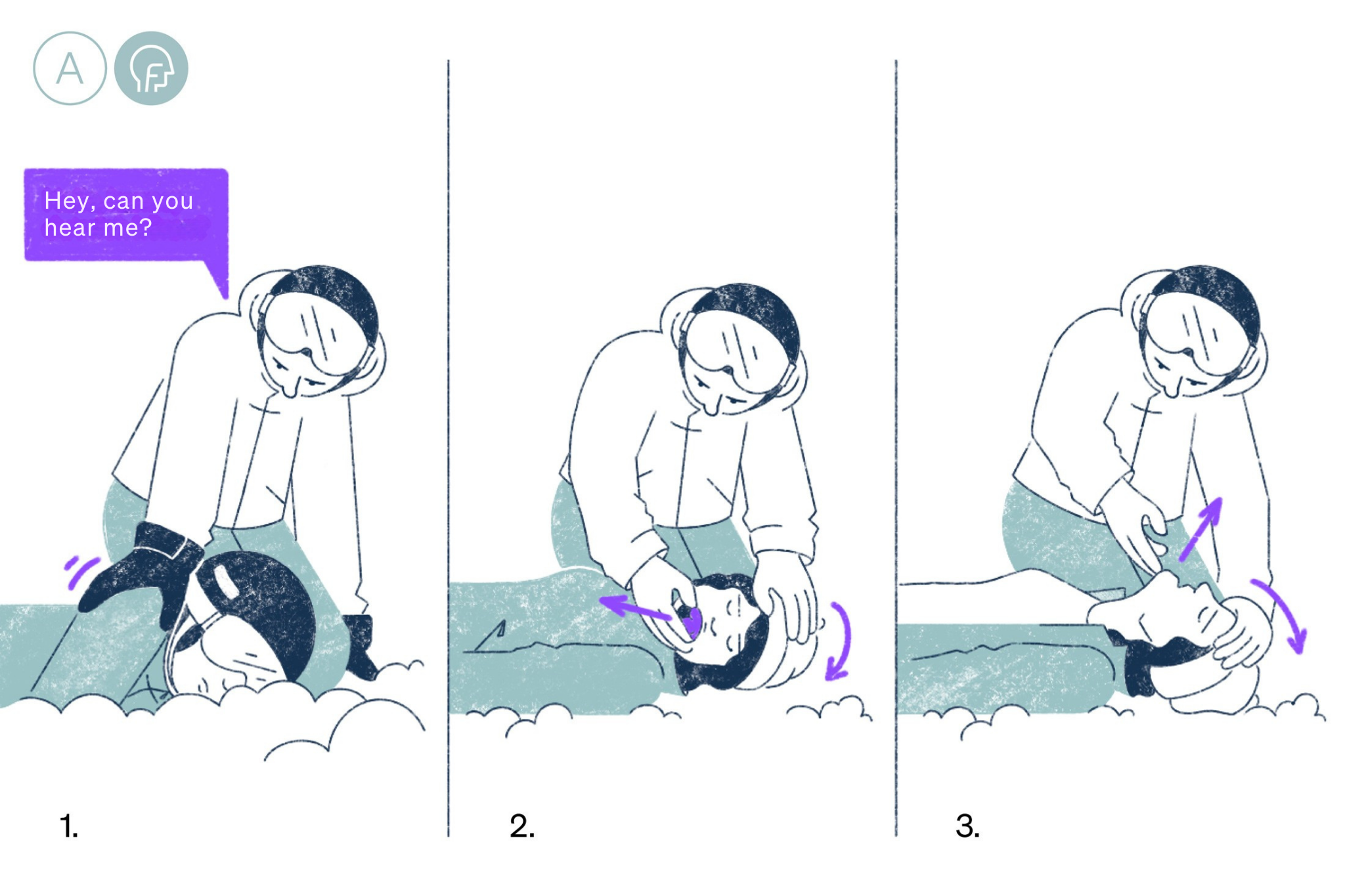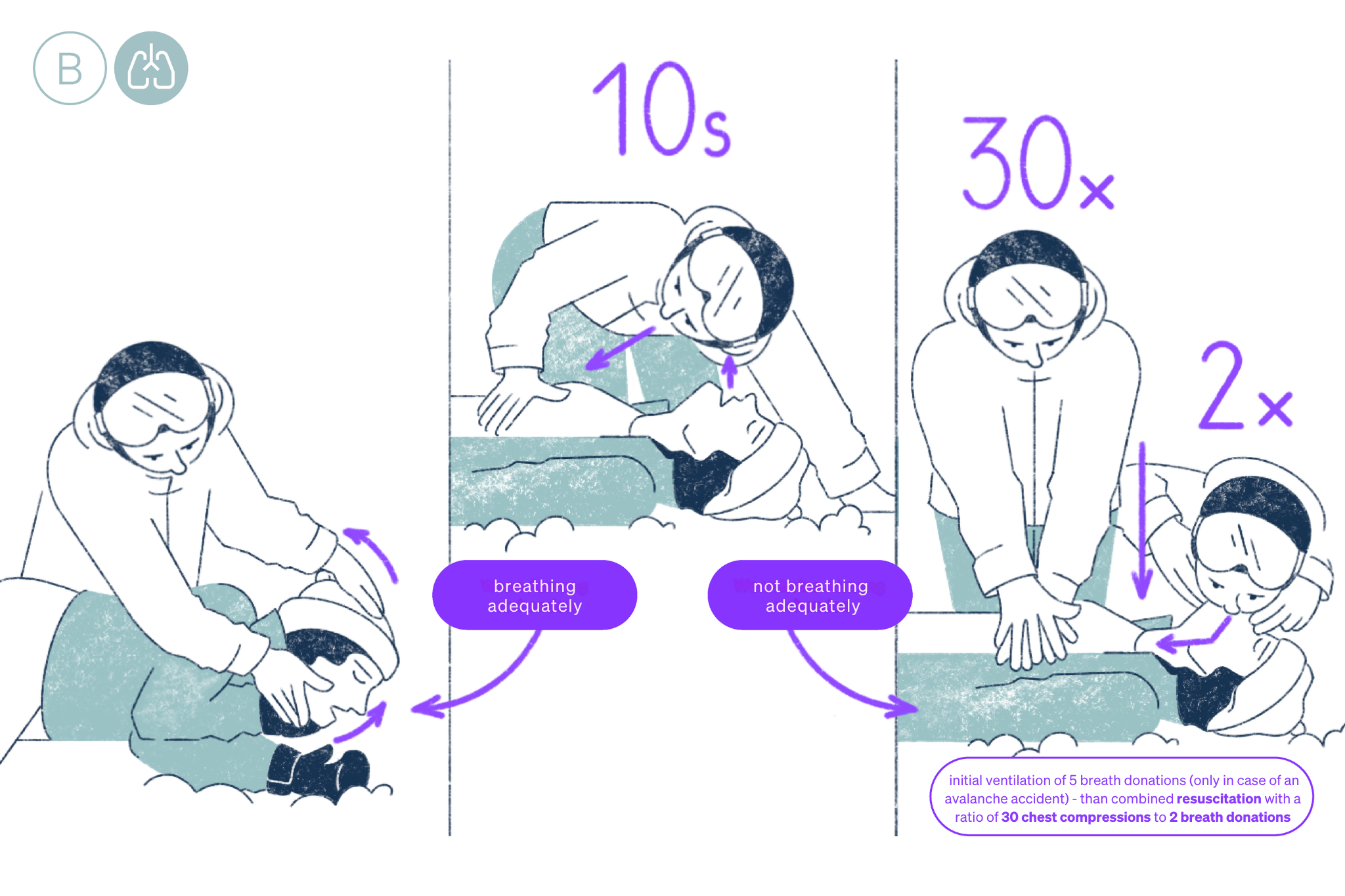First aid in an emergency situation
16.07.2025
First aid for injured persons is based on the priority principle. One of the most important measures, and one that everyone should and can carry out, is to call for professional help – in other words, to make an emergency call. It is also important to maintain the patient’s circulation and, if necessary, treat injuries until the emergency services arrive. The cABCDE scheme helps us to do this. It is a strategy for systematically providing first aid to an injured person.







